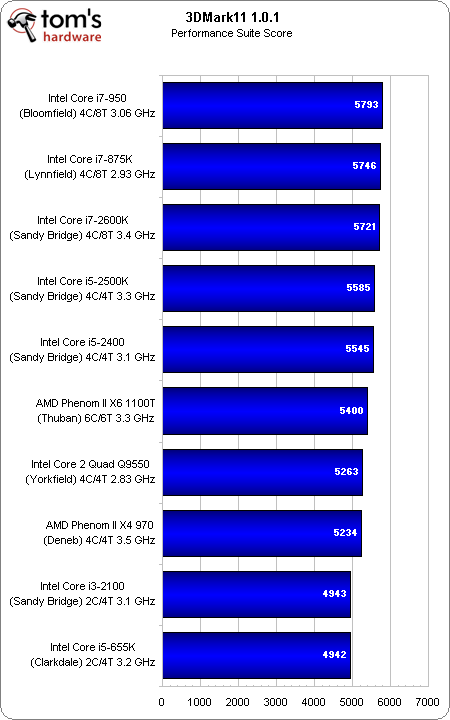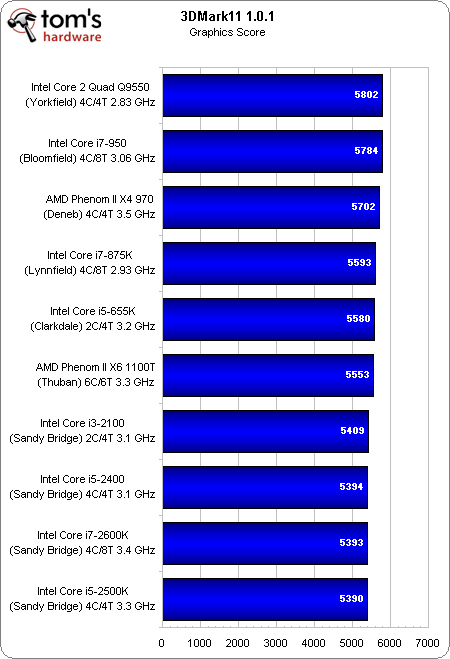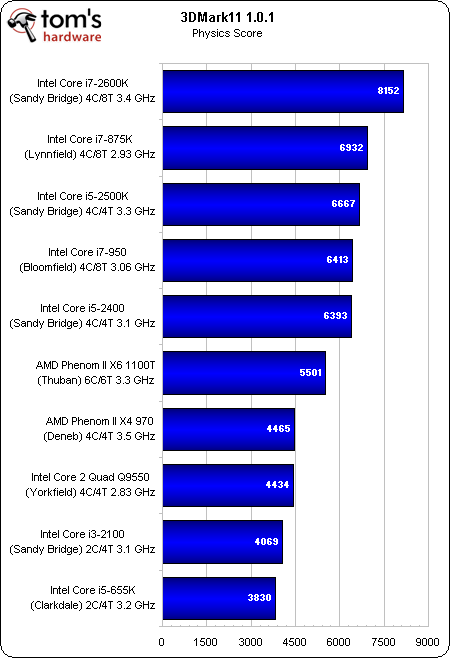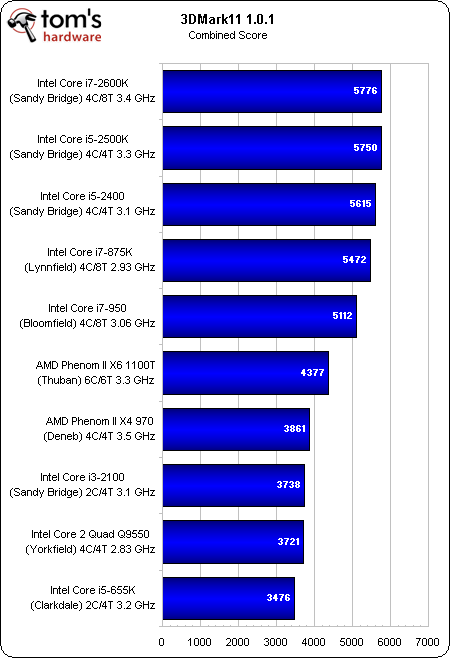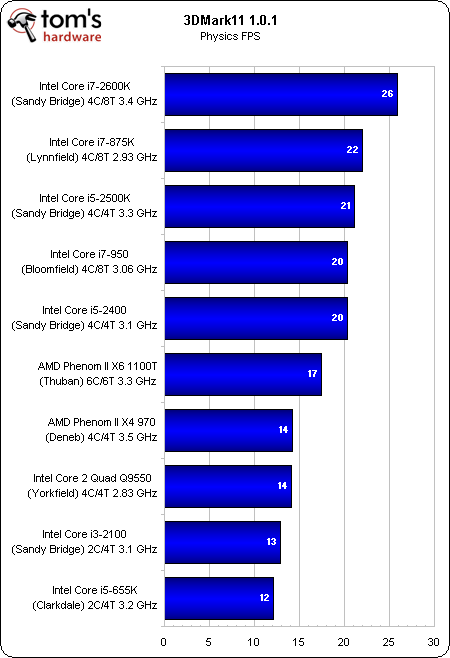Intel’s Second-Gen Core CPUs: The Sandy Bridge Review
Although the processing cores in Intel’s Sandy Bridge architecture are decidedly similar to Nehalem, the integration of on-die graphics and a ring bus improves performance for mainstream users. Intel’s Quick Sync is this design’s secret weapon, though.
Benchmark Results: 3DMark11
A more recent addition to our benchmark suite, 3DMark11 is principally a gaming metric—the dedicated Graphics score clearly reflects this in a very tight grouping of results using our GeForce GTX 580 reference board.
However, several components of this test also employ CPU-based physics—specifically, the Bullet library. The result is a more spread-out grouping in the overall Performance test. Even still, it’s hard to start declaring winners with fewer than 1000 points separating 10 different contenders.
Drop down to the broken-out Physics test, though, and it’s clear that the high-frequency quad-core Sandy Bridge- and Nehalem-based chips get favored. In fact, it looks like plenty of Turbo Boost headroom gets the Core i7-2600K and Core i7-875K their first- and second-place finishes, followed by the quad-core (it doesn’t seem like scaling to eight threads matters much here) Core i5-2500K.
What does hurt is having two physical cores—even aided by Hyper-Threading. The Core i3-2100 and Core i5-655K are soundly beaten by the older Core 2 Quad Q9550.
Get Tom's Hardware's best news and in-depth reviews, straight to your inbox.
Current page: Benchmark Results: 3DMark11
Prev Page Benchmark Results: PCMark Vantage Next Page Benchmark Results: SiSoftware Sandra 2011-
cangelini MoneyFace pEditor, page 10 has mistakes. Its LGA1155, not LGA1555.Reply
Fixed, thanks Money! -
juncture "an unlocked Sandy Bridge chip for $11 extra is actually pretty damn sexy."Reply
i think the author's saying he's a sexually active cyberphile -
fakie Contest is limited to residents of the USA (excluding Rhode Island) 18 years of age and older.Reply
Everytime there's a new contest, I see this line. =( -
englandr753 Great article guys. Glad to see you got your hands on those beauties. I look forward to you doing the same type of review with bulldozer. =DReply -
joytech22 Wow Intel owns when it came to converting video, beating out much faster dedicated solutions, which was strange but still awesome.Reply
I don't know how AMD's going to fare but i hope their new architecture will at least compete with these CPU's, because for a few years now AMD has been at least a generation worth of speed behind Intel.
Also Intel's IGP's are finally gaining some ground in the games department. -
cangelini fakieContest is limited to residents of the USA (excluding Rhode Island) 18 years of age and older.Everytime there's a new contest, I see this line. =(Reply
I really wish this weren't the case fakie--and I'm very sorry it is. We're unfortunately subject to the will of the finance folks and the government, who make it hard to give things away without significant tax ramifications. I know that's of little consolation, but that's the reason :(
Best,
Chris -
LuckyDucky7 "It’s the value-oriented buyers with processor budgets between $100 and $150 (where AMD offers some of its best deals) who get screwed."Reply
I believe that says it all. Sorry, Intel, your new architecture may be excellent, but unless the i3-2100 series outperforms anything AMD can offer at the same price range WHILE OVERCLOCKED, you will see none of my desktop dollars.
That is all.
